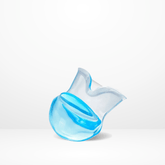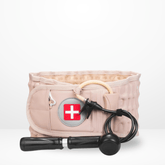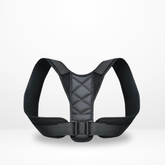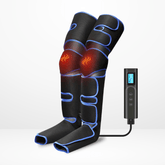How to Get Rid of Shoulder Pain Once and for All
Do you find yourself constantly struggling with shoulder pain? Whether it's due to an injury, overuse, or a medical condition, shoulder pain can significantly affect your daily life and overall well-being. In this comprehensive guide, we'll explore the causes of shoulder pain and provide you with effective strategies to eliminate it for good.

Common Causes of Shoulder Pain:
Rotator Cuff Injuries
The rotator cuff is a group of muscles and tendons that surround the shoulder joint, providing stability and allowing a wide range of motion. Injuries to the rotator cuff, such as tears or strains, are a common cause of shoulder pain. These injuries can occur due to overuse, repetitive motion, or sudden trauma.
Frozen Shoulder (Adhesive Capsulitis)
Frozen shoulder is a condition characterized by stiffness and pain in the shoulder joint. It occurs when the capsule surrounding the shoulder joint thickens and tightens, restricting movement. Frozen shoulder can develop gradually over time or be triggered by an injury or surgery.
Shoulder Impingement Syndrome
Shoulder impingement syndrome occurs when the tendons of the rotator cuff become pinched or compressed as they pass through the shoulder joint. This can lead to inflammation, pain, and reduced range of motion. Shoulder impingement syndrome is often caused by repetitive overhead arm movements, such as those performed during sports or manual labor.
Tendinitis and Bursitis
Tendinitis is inflammation of the tendons in the shoulder, while bursitis is inflammation of the bursa, small fluid-filled sacs that cushion the joints. Both tendinitis and bursitis can cause pain, swelling, and limited mobility in the shoulder joint. These conditions are often the result of overuse or repetitive motion.
Strategies to Relieve Shoulder Pain:
Rest and Avoid Overuse
Give your shoulder time to rest and avoid activities that aggravate the pain. Overuse can exacerbate shoulder injuries and delay healing.Apply Ice and Heat Therapy
Use ice packs to reduce inflammation and numb the area, especially during the acute phase of injury. Once inflammation has subsided, apply heat therapy to relax muscles and increase blood flow to the affected area.
Physical Therapy
A physical therapist can develop a personalized exercise program to strengthen the muscles around the shoulder joint, improve flexibility, and reduce pain. Physical therapy is especially beneficial for rotator cuff injuries, frozen shoulder, and shoulder impingement syndrome.
Medications
Over-the-counter pain relievers, such as ibuprofen or acetaminophen, can help alleviate shoulder pain and reduce inflammation. In some cases, your doctor may prescribe stronger pain medications or corticosteroid injections for more severe pain.
Surgery
In cases where conservative treatments fail to provide relief, surgery may be necessary. Surgical options for shoulder pain include arthroscopic surgery, rotator cuff repair, and shoulder replacement.
The best and easiest alernative to stop suffering from chronic shoulder pain, stiffness or tension :
- Massager Heating Shoulder Wrap - Adjustable Wireless Equipment For Shoulder Pain
Preventing Shoulder Pain:
Maintain Good Posture
Poor posture can put unnecessary strain on the shoulders and lead to pain and discomfort. Practice good posture by sitting and standing with your shoulders relaxed and your back straight.
Warm Up Before Exercise
Always warm up before engaging in physical activity, especially activities that involve the shoulders. Stretching and warming up can help prevent injuries and reduce the risk of shoulder pain.
Use Proper Lifting Techniques
When lifting heavy objects, use your legs and avoid lifting with your arms extended. Keep the object close to your body and use proper lifting techniques to reduce strain on the shoulders.
Strengthen Shoulder Muscles:
Incorporate exercises that target the muscles of the shoulder, such as shoulder presses, lateral raises, and rows, into your fitness routine. Strengthening these muscles can help prevent injuries and reduce the risk of shoulder pain.
Conclusion:
Don't let shoulder pain hold you back from living your life to the fullest. By understanding the causes of shoulder pain and implementing these effective strategies, you can eliminate shoulder pain once and for all. Remember to listen to your body, take breaks when needed, and seek medical attention if your shoulder pain persists or worsens.
For more information on relieving shoulder pain and related products, visit this page for a wide range of shoulder braces, supports, and pain relief solutions.


















